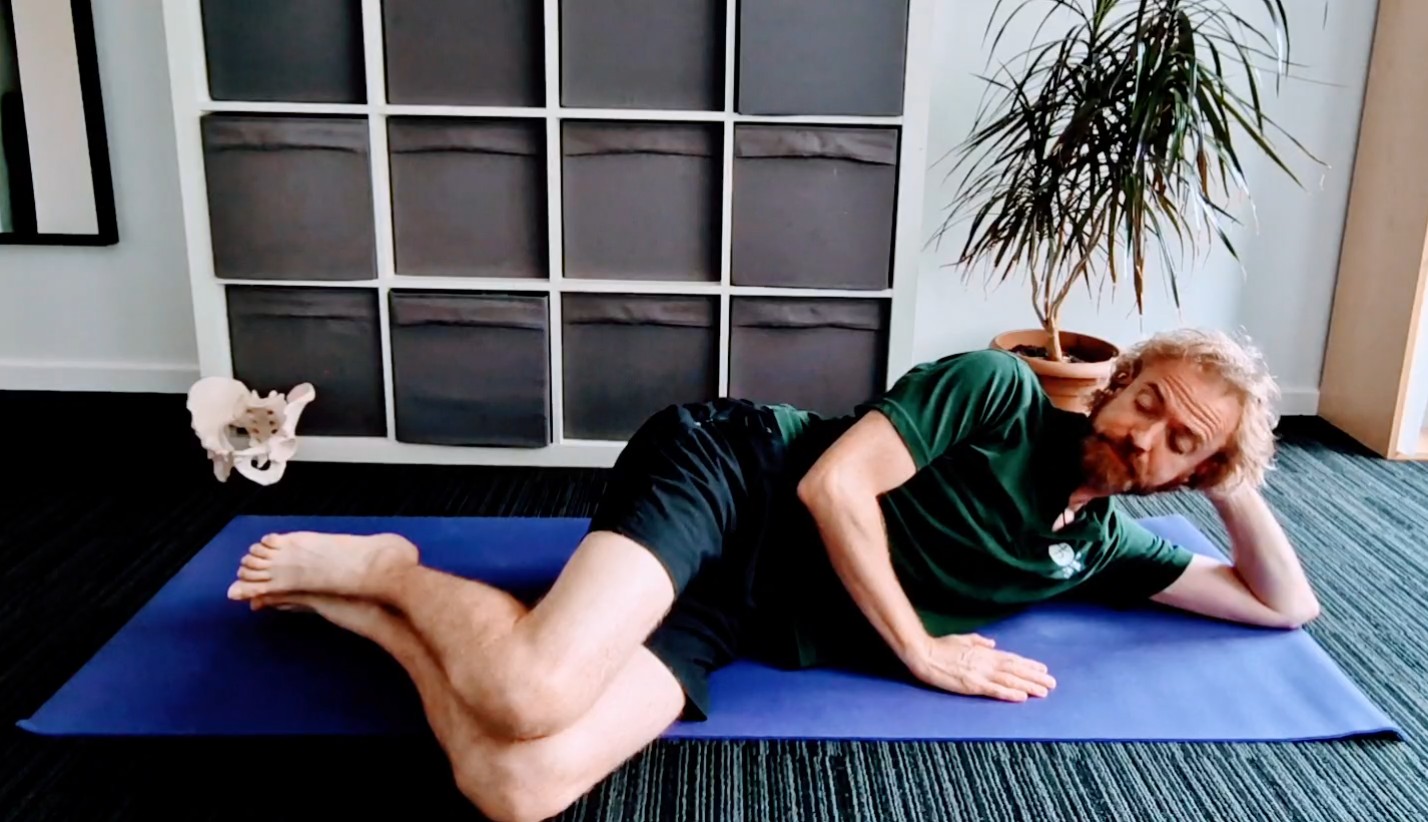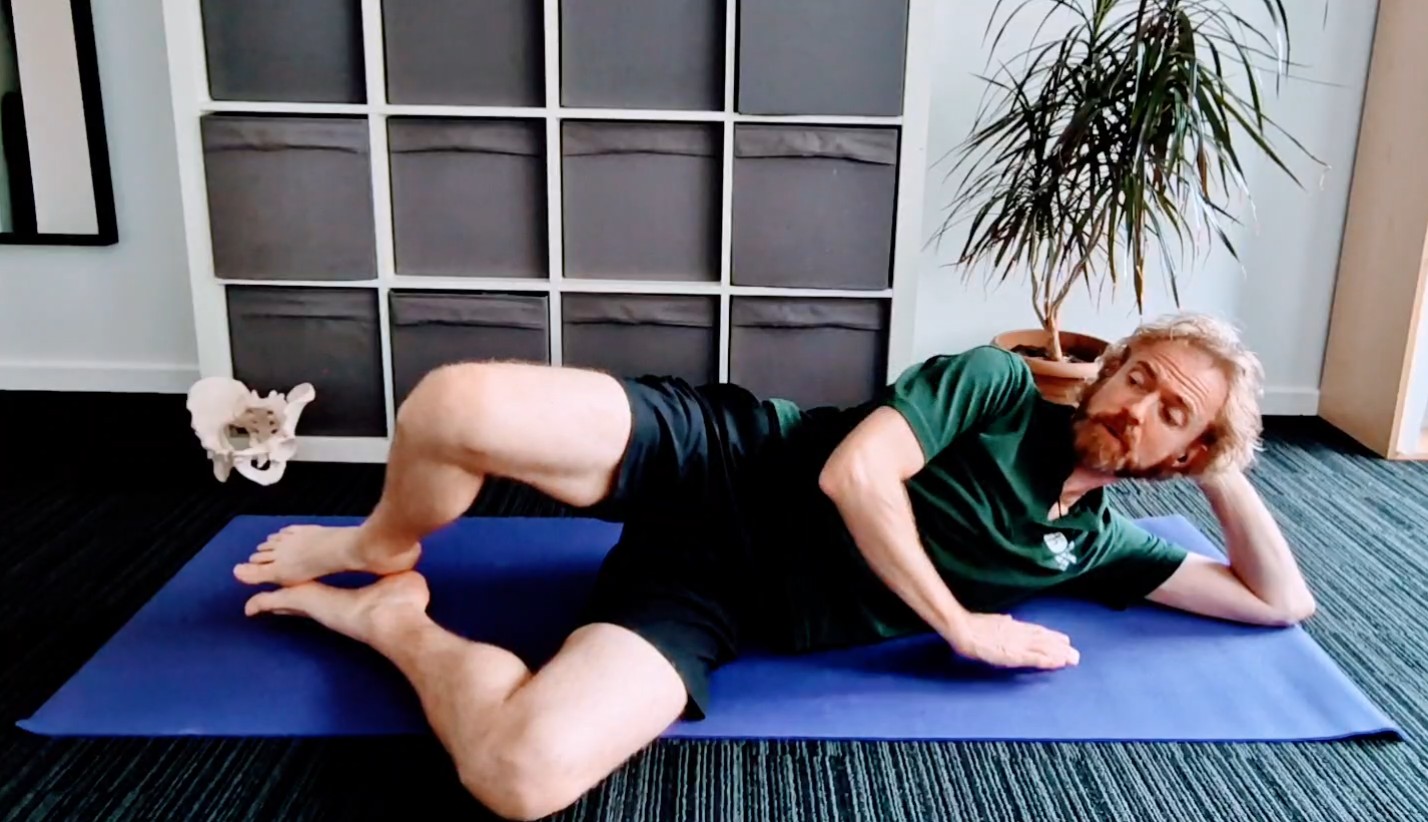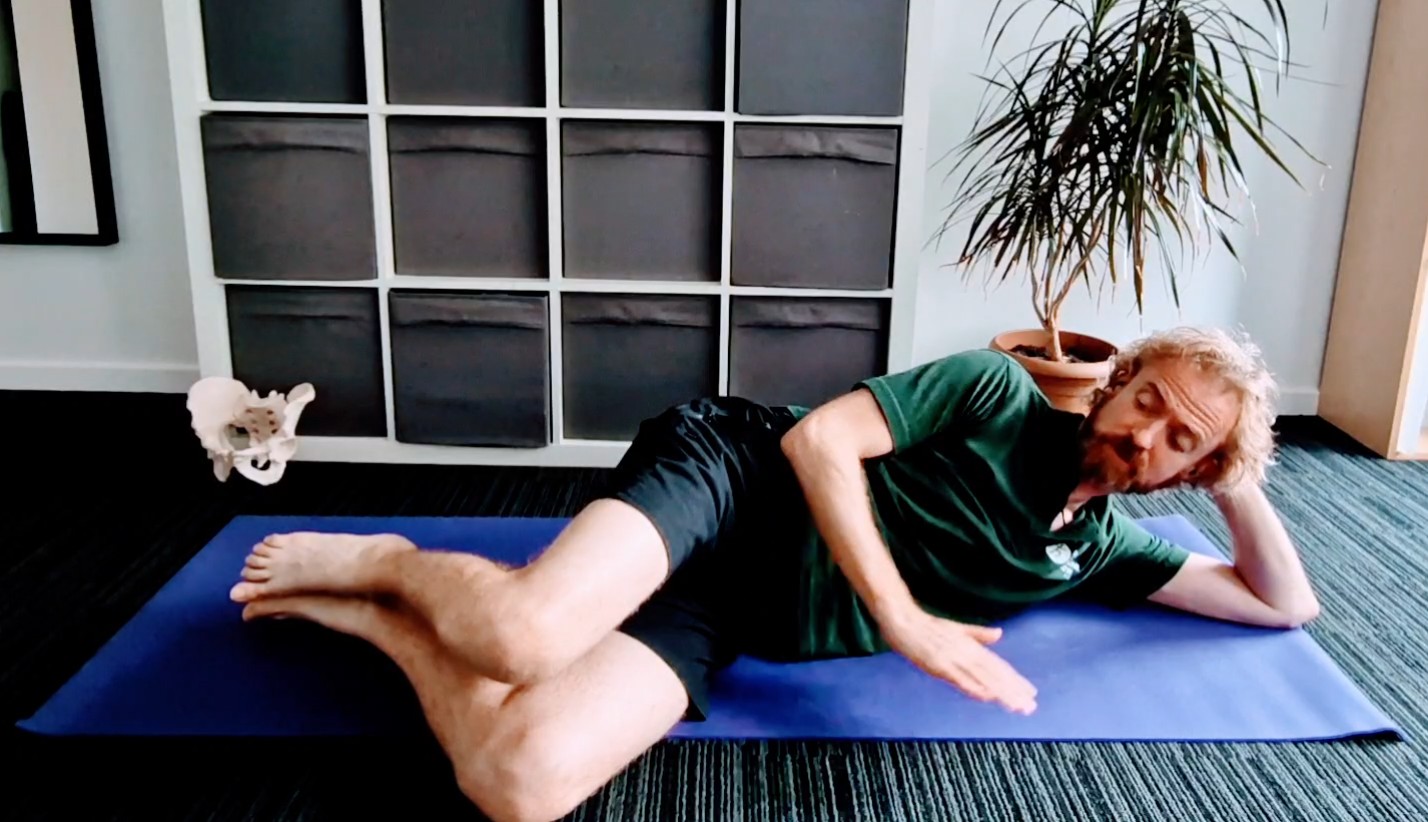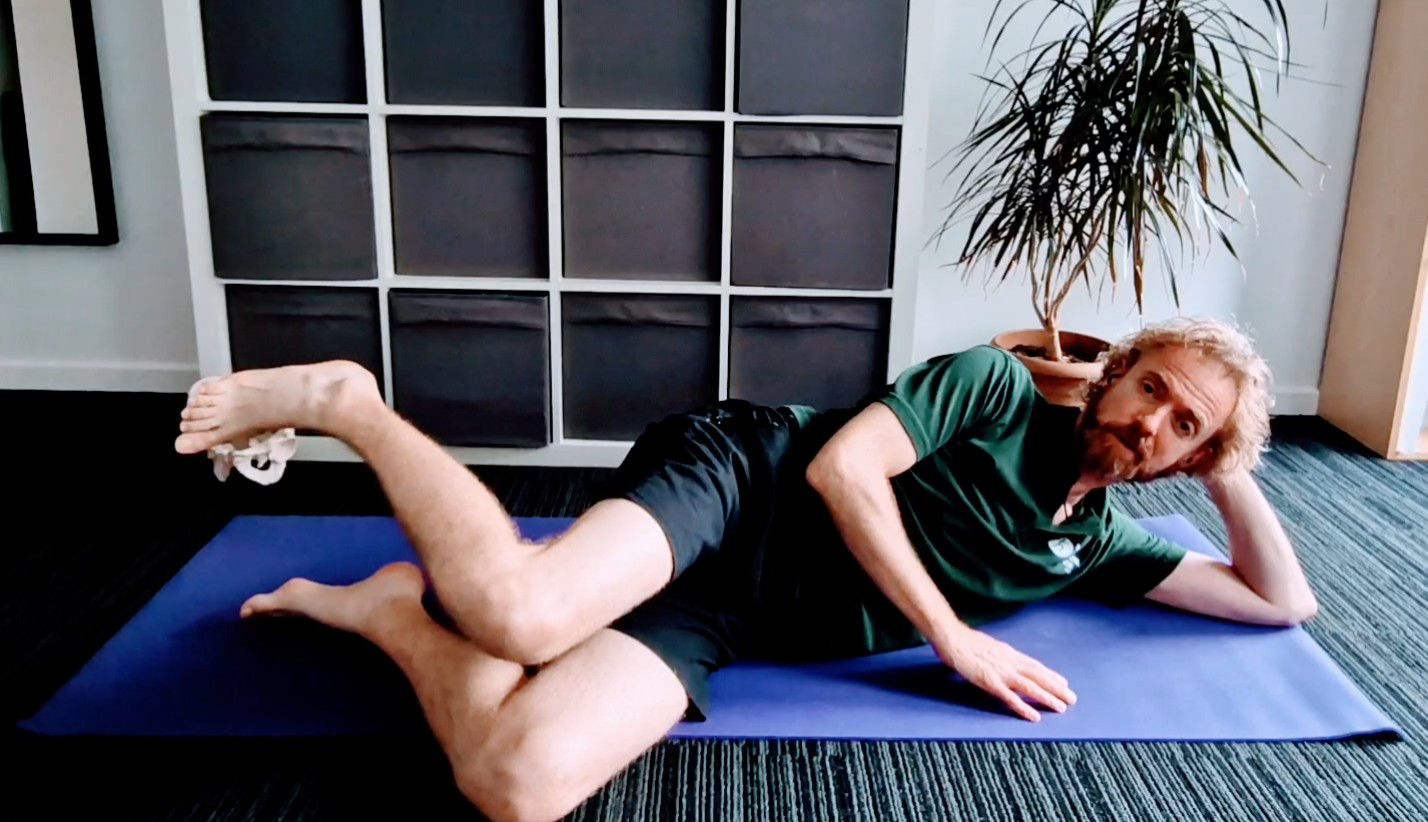This is quite a classic movement that is meant to help strengthen one of the hip stabilisers that is the Gluteus Medius muscle.
This muscle fans across the side of the pelvis, from the boney point of the Greater Trochanter (which most people will point to when talking about their hip) and helps to stop you falling over when you stand on one leg or wobbling too much when you’re walking.
Some will say that this exercise is not functional, but if you have issues getting an awareness of this muscle this can really help you focus (in which case I would argue it is functional).
There is a video at the bottom of this page taking your through the stretches, after the steps and photos.
Equipment
Yoga mat if you are lying on the floor, or a bed.
A cushion might be helpful to support the head.
Steps
- Lie on your side, have your hips bent to about 135 degrees, and knees also bent to 90 degrees. You want your back and your feet to be in a line with each other, so the knees are not directly in front.
- Make sure you’re lying directly on your side (rather than rolling the ribcage forwards or backwards)
- If you have a deep curve (lordosis) in your low back, see if you can reduce that a little bit by flattening the low back.
- Moving slowly, and with control, lift the top knee upwards. Keep your feet together at this point. Try to acheive this movemnt without rolling the pelvis forwards or backwards,
- You will be turning at the hip and to get the knee pointing up towards the ceiling (if that range of movement is available to you).
- Slowly lower your knee back down.
- Repeat Steps 2-4 five to ten times.
- Roll over and repeat on the other side.


Steps – More advanced
This is a slightly more advanced version.
- Lie on your side, have your hips bent to about 135 degrees, and knees also bent to 90 degrees. You want your back and your feet to be in a line with each other, so the knees are not directly in front.
- Make sure you’re lying directly on your side (rather than rolling the ribcage forwards or backwards)
- If you have a deep curve (lordosis) in your low back, see if you can reduce that a little bit by flattening the low back.
- Moving slowly, and with control, lift the top knee upwards until the knee is in line with the top of the pelvis. Keep your feet together at this point. Try to acheive this movemnt without rolling the pelvis forwards or backwards.
- Keeping the knee floating in line with your pelvis lift the top foot up towards the ceiling as far as you can without the knee changing position.
- Lower the foot down to rest on top of the other.
- If you need a break lower the knees together and then repeat steps 2-4 five to tens times.
- Repeat Steps 2-4 five to ten times.
- Roll over and repeat on the other side.



Taking it further
If you have a resistance band you can place that around both knees and this will increase the difficulty. Start off with the more straightforward clam shell, before progressing to the more challenging one with moving the top foot.
Video
Here’s a short video of me doing the movement on the ground.
Thanks for reading this my lovely Interonauts.
Tim


